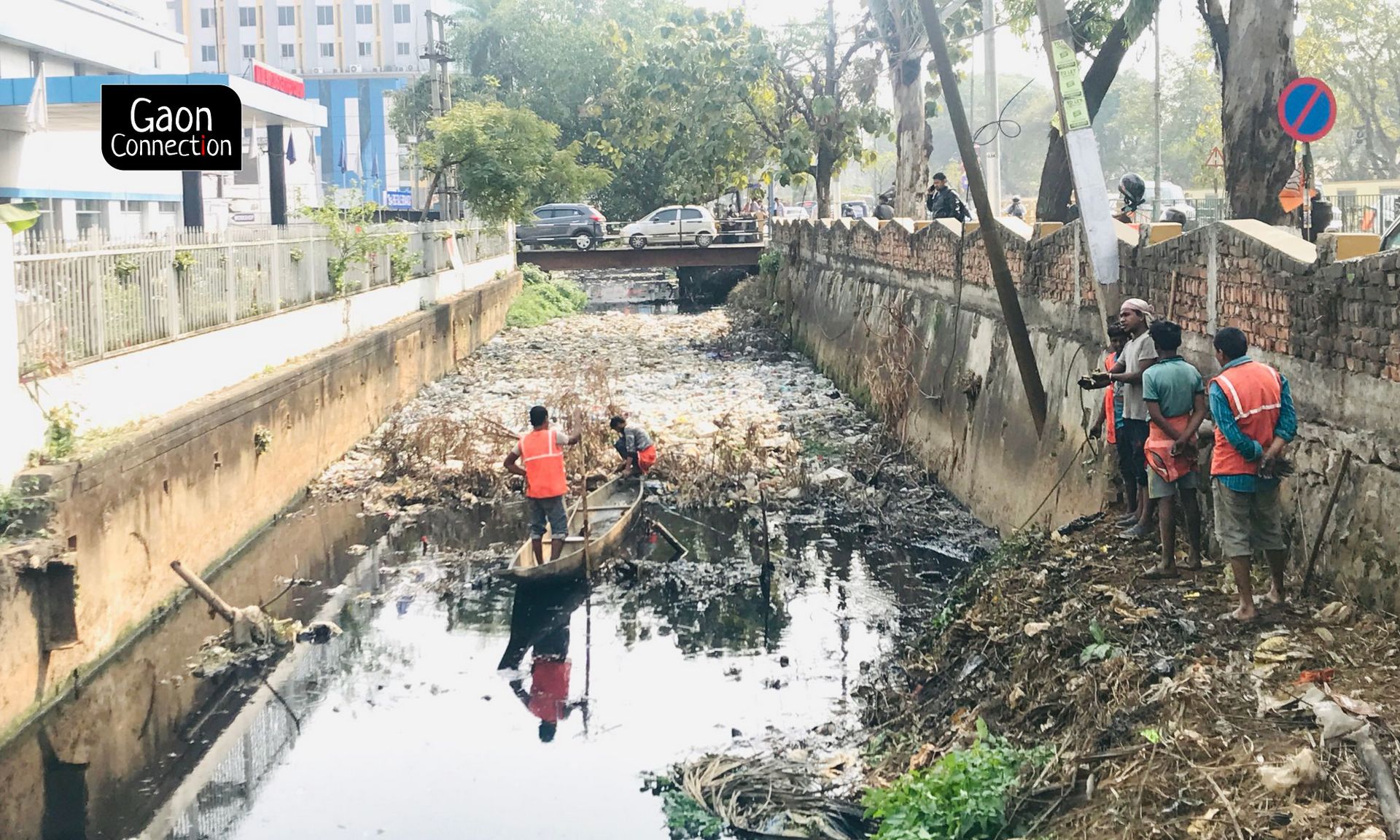 Believe it or not, water and food are two essential sources of superbugs in India, besides factors such as over-prescription and overuse or erratic use of antibiotics in health care settings! How does this happen?
Believe it or not, water and food are two essential sources of superbugs in India, besides factors such as over-prescription and overuse or erratic use of antibiotics in health care settings! How does this happen?
Water sources in India are highly contaminated. Forty-three million tonnes of solid waste are collected annually, out of which 11.9 million are treated, and 31 million are dumped at landfill sites.
Sixty-two million tonnes of waste is generated each year in India. One of the worst Indian nightmares is the lack of systematic mechanisms to segregate and process this waste which is a dangerous concoction of hard plastic, papers, cartons, metals, along with rotting food items, as well as bandages, linen, soiled sanitary products and other infectious waste.
Many-a-times, this waste is collected in a mixed form, transported and disposed of without being adequately processed and often gets released into the water and soil, polluting it. (2)
Open defecation is frequent, and a large number of people in the villages still relieve themselves in the open -in the fields, behind trees, on the roadside, railway tracks and river banks leading to faecal contamination of water and soil. Liquid waste or sewage containing large amounts of antibiotic residues are discharged into a river from pharmaceutical industries, and hospitals and wastewater generated in the cities are often released untreated into the water sources.
The untreated sewage and effluents that are released into the water and soil are laden with various disease-producing bacteria that develop antibiotic resistance due to prolonged exposure to antibiotics present in the industrial and hospital effluents breeds superbugs.
Not only rivers, streams, ponds and lakes, but even groundwater has been found to harbour antibiotic-resistant bacteria at different sites in India. Recent studies show that rivers such as the Ganga, Yamuna, Cauvery and Mutha are highly polluted and harbour bacteria with high levels of resistance to broad-spectrum antibiotics. Water samples were taken from rivers, and sewage treatment plants (STPs) from Bihar, Goa, Karnataka, Tamil Nadu, and Telangana found E. coli in the waters that were resistant to antibiotics.
Drinking water collected from rivers, ponds, tube wells, hand pumps, piped supply and dug wells in Ayodhya-Faizabad, located on the banks of the river Saryu and water sources from east Sikkim showed that bacteria such as E. coli and Klebsiella species were resistant to the latest antibiotics. Analysis of water sources from streams, lakes, tube wells, and community supplied water in Kashmir also showed that E. coli was resistant to antibiotics.
Tap water, borewell water and water from rivers and lakes, water sources contaminated by sewage treatment plants, and surface water near drug manufacturing units in Hyderabad were found to have antibiotic-resistant bacteria in the waters. Wastewater samples from sewage treatment plants (STPs) in South India showed that hospital wastewater inflow led to an increase in drug-resistant bacteria.
ANTIBIOTIC RESISTANT INFECTIONS (Ref 12)
Antimicrobial resistance (AMR) continues to pose a significant public health problem in terms of mortality and economic loss. Health authorities of several countries, including India, have formulated action plans for its containment.
In this fight against AMR, it is essential to realize the contribution by all the following four spheres: humans, animals, food and environment. This review incorporates all the areas of One Health concept from the Indian perspective. India has one of the highest rates of resistance to antimicrobial agents used both in humans and food animals. The environment, especially the water bodies, have also reported the presence of resistant organisms or their genes.
Specific socio-economic and cultural factors prevalent in India make the containment of resistance more challenging. Injudicious use of antimicrobials and inadequate treatment of wastewaters are essential drivers of AMR in India.
Use of sludge in agriculture, improper discard of livestock animals and aquaculture industry are considered AMR contributors in other countries, but Indian data regarding these are lacking. Efforts to combat AMR have been initiated by the Indian health authorities but are still at preliminary stages. Keeping in view the challenges unique to India, future directions are proposed.
Bacterial resistance can spread rapidly as superbugs can multiply fast and make other bacteria found in food and water, resistant to antibiotics.
Superbugs can be transferred to humans through several modes such as direct contact with animal handlers, live animals and animal carcasses at poultry farms and slaughterhouses; consumption of meat, chicken, fish, eggs and milk contaminated with antibiotic-resistant bacteria; and environmental contamination of soil, water and air through human excreta, animal droppings and farm waste.
Poor sanitation and hygiene and WASH practices among individuals who are carriers of superbugs can also facilitate the spread of superbugs in the community, household and healthcare settings.
ARE YOU PREPARED TO DEAL WITH THE CRISIS?
On April 2017, a five-year National Action Plan was released by the health ministry to tackle the problem of antibiotic resistance in the country. Experts argue that the implementation task force for this plan needs maximum support and resources from the government as the current standing and preparation of India against this challenge is dangerously inadequate.
No legislative provisions exist to prevent the use of antibiotics in livestock and poultry and dairy products in India, and no standards have been framed by the Central Pollution and Control Board (CPCB) yet for pharmaceutical industries to prevent antibiotic residues in industrial effluents from entering the water bodies and the environment.
Drug manufacturers, livestock and poultry producers, hospitals and healthcare facilities are some of the superbug hotspots and significant polluters of the environment. Strong legislation and a highly effective regulatory system need to be put in place urgently to prevent the spread of superbugs by involving stakeholders at different scientific, social, legal and policy levels."
Conducting systematic clinical and epidemiological studies within these hotspots through routine surveillance of drug-resistant bacteria in water, food, humans, animals, and the environment is also essential to find an appropriate solution to the problem. "For this, we need to develop strict screening and monitoring protocols for different situations and contexts within these hotspots," he says.
"At the same time, increasing awareness among the public on the threat of drug-resistant bacteria, overuse of antibiotics, the role of good sanitation and hygiene and wash practices, needs to be our priority to prevent the spread of superbugs in the country, but this is not one that can be implemented by law, but by education.
No longer can we turn our backs to the fundamental principle that good health is often based on access to clean food, water and environment and not medicines.
There is more emphasis on prescribing antibiotics and less on infection control at present in India. More focus on infection control by focusing on sanitation and bringing down the use of antibiotics will reduce antibiotic resistance. "The sanitation connection, though overlooked, is elementary: cleaner surroundings both in the community as well in hospitals can check the incidence of infectious diseases and bring down drug use," she says.
It is time we shift our attention from quick-fix solutions to addressing the root cause of the superbug problem-better sanitation and a clean environment.
ANIMAL FOOD HARBOUR SUPERBUGS
Samples from food products such as poultry, fish, eggs, milk have also been found to harbour antibiotic-resistant bacteria. This is because low doses of antibiotics are routinely used as growth promoters in livestock in India.
Antibiotic-resistant bacteria were found in fresh herbs and vegetables imported from India to Switzerland and raw chicken, meat, egg and unpasteurized milk samples from Hyderabad. Studies from poultry, shrimp farms of Andhra Pradesh, Karnataka, Kerala, and Tamil Nadu, milk sample from livestock in Tamil Nadu, fish samples from Kerala, Karnataka and West Bengal also found antibiotic-resistant bacteria in the food samples tested.

